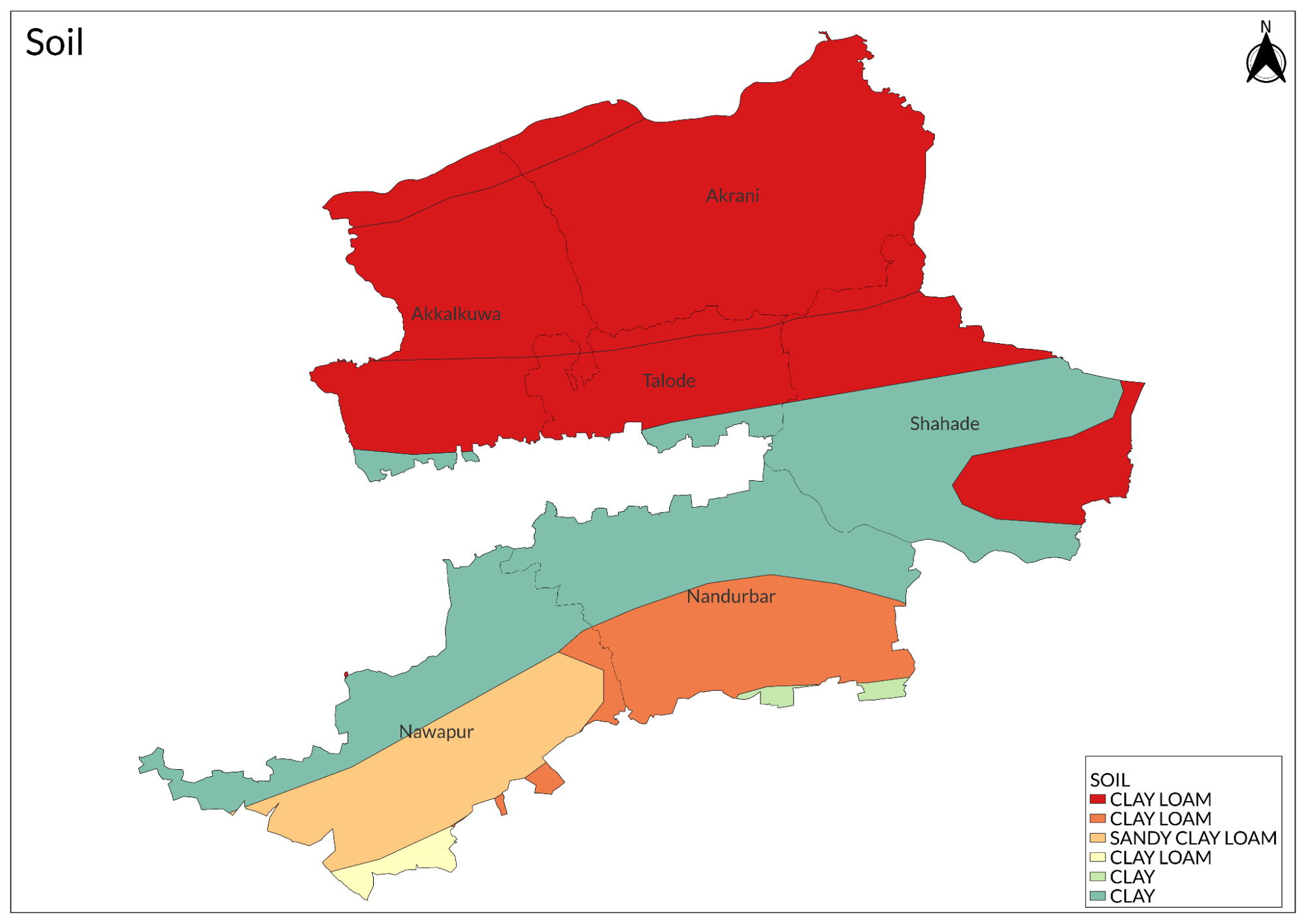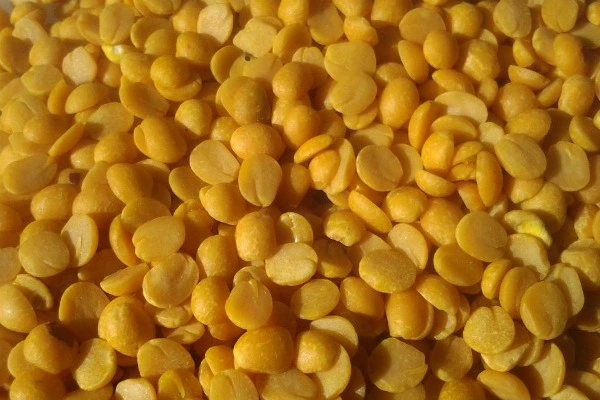Contents
- Crop Cultivation
- Agricultural Communities
- Types of Farming
- Traditional Agricultural Practices
- Water Management Methods
- Slash-and-Burn Cultivation
- Indigenous Pest Control Methods
- Biofertilizers and Green Manure
- Use of technology
- Institutional Infrastructure
- Market Structure: APMCs
- List of APMC markets(as of September 2024)
- Farmers Issues
- Climate Change
- Graphs
- Irrigation
- A. No. of Projects
- B. No. of Ponds/Vilage Lakes and Storage Dams
- C. Irrigation Beneficiary Area vs Irrigated Area
- D. Share of Beneficiary Area Irrigated
- E. Tubewells and Pumps Installed In The Year
- F. Irrigation and Water Pumping Facilities
- Cropping Metrics
- A. Share in Total Holdings
- B. Cultivated Area (With Components)
- C. Gross Cropped Area (Irrigated + Unirrigated)
- D. Share of Cropped Area Irrigated
- E. Distribution of Chemical Fertilizers
- Land Use and Credit
- A. Area of Agricultural Land Holdings (With Size Group)
- B. Size Groups' Share in Total Agricultural Land Holdings Area
- C. No. of Agricultural Land Holdings (With Size Group)
- D. Size Groups' Share in Total No. of Agricultural Land Holdings
- E. Agricultural Lending
- F. Agricultural Credit as a share of Total Credit
- Sources
NANDURBAR
Agriculture
Last updated on 6 November 2025. Help us improve the information on this page by clicking on suggest edits or writing to us.
Nandurbar district is located in the Khandesh region of Maharashtra, in the Western Plateau and hilly region. Known for its rich black soil, typical of the Deccan Plateau, the district’s economy is primarily agricultural, with Cotton, Paddy, millet, and Sorghum as the major crops. Nandurbar is drained by several significant rivers, such as Tapi and its tributaries, such as Nagan, Shivan, Gomai, Dehali, and Narmada and its tributaries, such as Katri, Devnadi, Udai, etc.
Crop Cultivation

The district of Nandurbar lies entirely in the Western part of the Deccan Plateau. The weather is usually hot and semi-arid, and some of the major types of soils found are Deep black soil, Medium deep black soils, and Shallow black soils. The area is conducive for Kharif crops such as Paddy, Soybean, Maize, Pearl Millet, Sorghum, and Rabi crops such as Wheat, Chick Pea, and Groundnut. Horticulture crops such as Mango, Ber, Guava, Custard Apple, Sapota, Chilli, Onion, Brinjal, and Tomato are also grown.

Other major crops, such as Cotton, particularly the Bt cotton variety, are also grown with planting periods differing based on whether the crops are rainfed or irrigated. For rainfed cotton, the sowing begins from the third week of June to the second week of July, while for irrigated crops, planting starts earlier, between the first week of May and the first week of June. Other major Kharif crops like sorghum, paddy, pearl millet, maize, and soybean follow a similar planting schedule. Farmers plant sorghum varieties like CSH-14, CSH-16, and CSH-17. Paddy varieties of sorghum include Phule Radha, Indrayani, and Bhogavati. Pearl millet is cultivated using varieties like Shraddha, Saburi, and Shanti, and Karveer and Phule Rajarshee are preferred for maize.
Navapur taluka in Nandurbar district, Maharashtra, is famous for its premium tur dal, known for its shiny golden-white color. This variety, called Desi tur or Diwali tur, grows well in the region's black cotton soil and favorable agro-climatic conditions, including hilly terrain and ideal rainfall. Navapur's unique environment contributes to the superior quality of its tur dal, which is gaining recognition for Geographical Indication (GI) status.

Rabi sorghum is typically planted between the third week of September and the second week of October. Wheat sowing follows shortly thereafter, occurring from the second week of October to the second week of November. These wheat varieties include Trimbak, Panchavati, and Godavari. Farmers also cultivate chickpeas, with varieties like Vijay and Digvijay being prominent. Other notable crops in the region include groundnut and sugarcane.
The Phule Jyoti variety and local types dominate chili production, while late Kharif onion varieties such as Phule Samarth and Baswant 780 are preferred by farmers. For tomatoes, the recommended variety is Phule Raja. Local varieties of brinjal are also grown here.
This diverse range of crops demonstrates Nandurbar's agricultural strength and reliance on both rainfed and irrigated farming practices. The district's farmers work with a variety of modern and traditional crop varieties to maintain productivity in both Kharif and Rabi seasons.
Agricultural Communities
According to the district Gazetteer of the Dhulia District (1974), the farming communities of Nandurbar can broadly be divided into two distinct groups, each associated with different geographic regions and farming practices. The first group comprises the indigenous communities, who inhabit the hilly regions of the district, while the second group includes the local husbandmen, primarily from the plains and fertile areas.
In the hilly regions, particularly in the northern Satpuda ranges and the southern Satmala ranges, farming is still largely carried out in an aboriginal manner. These areas are home to various indigenous communities such as the Bhils, Dhanka, Gamit, Kokna, Naikda, and Pardhi communities. Together, they represent a significant portion of the district's population. These indigenous communities traditionally rely not only on cultivation but also on gathering wild fruits, hunting, and activities like wood-cutting to support their livelihoods. Their farming practices are often less mechanized and more dependent on natural resources.
The other group of farmers in Nandurbar consists of the local husbandmen, including the Maratha, Gujar, Rajput, and Mali communities. These farmers engage in more established agricultural practices, with some communities maintaining unique traditions. For example, the Gujar cultivators are known for their fondness for horses, which they often take into their fields. The Mali community continues their traditional method of cultivation called bagait or mala, which focuses on horticulture and garden farming. These local husbandmen are key players in the district’s agricultural economy, contributing significantly to crop production, despite often facing economic challenges that place a heavy burden on their livelihoods.
Types of Farming
Nandurbar district features a variety of farming systems based on the region's climate and agricultural practices, such as Rainfed Farming, in which crops are grown without any irrigation infrastructure, making the agricultural cycle heavily dependent on monsoons. Although much of Nandurbar’s agriculture is rainfed, irrigation also plays an essential role in crop cultivation. Crops like pearl millet, sorghum, upland paddy, pigeon pea, soybean, cotton, and maize benefit from "protective irrigation," helping them withstand periods of water scarcity and ensuring better yields.
Traditional Agricultural Practices
Water Management Methods
One common traditional method is flooding, where water is allowed to spread freely across the entire field. This technique is especially useful in paddy cultivation to maintain the required water levels for rice growth.
Slash-and-Burn Cultivation
Slash-and-burn cultivation, also known as shifting cultivation, is mainly practised by the district’s indigenous communities. This method involves cutting down and burning vegetation in a specific area before planting crops. The high temperatures generated by burning help reduce many soil-borne pathogens.
Fallowing Practices
Fallowing is another traditional method used to restore soil fertility. This involves leaving land uncultivated for a certain period to allow it to rest and recover. Fallowing can be practised as:
- Dry fallowing, where land is left bare.
- Flood fallowing, where the land is deliberately flooded.
Both help manage plant diseases, especially when combined with crop rotation.
Traditional Storage Techniques
Farmers in Nandurbar have developed practical storage methods to protect harvested crops from rain, sun, wind, and pests. One example is the practice of twisting maize ears downwards after harvest. This protects the grain from rain and wind, allows better drying on the plant, and makes it harder for pests like rats and birds to reach the grain. Lower moisture levels reduce storage losses.
Indigenous Pest Control Methods
Indigenous communities such as the Valvi, Kokani, Pawri, Mavachi, and Bhils have extensive knowledge of plant-based pest control. Women play an active role in seed selection, grain storage, and protection from pest attacks. Common traditional pest control plants include:
- Neem (Azadirachta indica): Used in stored grains to control insects.
- Vitex negundo (Nirgudi): Leaves and twigs are mixed with stored grains to deter pests like brinjal whitefly, groundnut leaf miner, thrips, brinjal leaf beetle, tomato fruit borer, and groundnut cutworm.
- Calotropis gigantea (Rui, Mandar): Combined with garlic, onion, and chili to make mixtures used against pests such as the brinjal Epilachna beetle, pumpkin caterpillar, and tomato fruit borer.
Biofertilizers and Green Manure
Local farmers also prepare biofertilizers known as Jivamrut. This mixture uses cow dung, cow urine, gram flour, jaggery, and soil, which are fermented for seven days to create a nutrient-rich liquid applied to crops. Jivamrut supports healthy plant growth and reduces dependence on synthetic fertilizers.
Green manure is another practice where plant materials, such as leaves from neem, Calotropis gigantea, and Cassia javanica, are incorporated into the soil to enrich its nutrient content and promote sustainable soil health.
Use of technology
ICAR-NIASM has worked to help indigenous farmers in Navapur Taluka increase their agricultural output and income. These interventions have been done in a variety of areas, including field crops, horticultural crops, livestock and poultry, fisheries, and integrated agri-aquaculture. These interventions have resulted in increased productivity of rice, sugarcane, onion, banana, baby corn, milk, and fish. These farmers have also experienced higher incomes and increased access to nutritious foods.
For Paddy cultivation, the "Four-point rice production technology" was promoted to enhance rice yield. This technology includes seed treatment, the use of high-yielding and drought-resistant varieties, Integrated Nutrient Management (INM), Integrated Pest Management (IPM), and a Village Seed Production Programme. Farmers were also encouraged to plant Gliricidia sepium, a multipurpose tree, as hedgerows. Gliricidia can be used for protection from grazing animals, green manure, and fodder. In addition to the Sugarcane cultivators, Water-efficient crop production technologies were demonstrated to conserve water resources. Training was provided on water management, micro-irrigation, soil health assessment, and soil-test-based fertilizer recommendations. Farmers were encouraged to use green manuring, crop rotation, and organic manure. Improved production technology, especially the selection of high-yielding planting material, was also emphasized.
Lastly, for Horticulture Crops, such as Onions, Bananas, and Dragonfruit. Virus-free tissue culture plants of improved onion varieties were introduced, virus-free tissue culture plants of the Grand Nain variety were distributed respectively and Dragon fruit cuttings were distributed to indigenous farmers to encourage kitchen gardening.
Institutional Infrastructure
According to the NABARD’s 2023-24 Potential Linked Credit Plan, Nandurbar has an averagely developed agricultural infrastructure, including 6 Agricultural Produce Market Committees (APMCs), 74 godowns, no cold storage facilities, 3 soil testing centers, 11 plantation nurseries, 165 farmers' clubs, and approximately 900 fertilizer, seed, and pesticide outlets. Additionally, there is one Krishi Vigyan Kendra (KVK) supporting agricultural extension services in the region. In addition to this, the district also has 235 primary agriculture cooperative societies, one Regional Rural cooperative bank, and a District Central Cooperative Bank (Dhule and Nandurbar District Central Co-operative Bank).
Market Structure: APMCs
There are in total of 6 APMC markets in the district of Nandurbar, these are namely, Akkalkuwa, Dhadgaon, Nandurbar, Navapur, Shahada, and Taloda. The APMC at Nandurbar City is the oldest, as it was established in the year 1948. Farm produce such as Wheat (Husked), Jowar, Maize, Red Chillies, Onions, Green Gram, Cotton, etc, are important commodities that are sold at these markets.
List of APMC markets(as of September 2024)
|
Sr. No |
Name |
Est. Year |
Chairman |
No. of Godowns |
|
1 |
Akkalkuwa |
1999 |
NA |
1 |
|
2 |
Dhadgaon |
2001 |
Shankar Bhima Pawara |
1 |
|
3 |
Nandurbar |
1948 |
Bharat Bhabuta Patil |
56 |
|
4 |
Navapur |
1950 |
Bakaram Fattesing Gavit |
11 |
|
5 |
Shahada |
1949 |
Abhijit Motilal Patil |
7 |
|
6 |
Taloda |
1961 |
Udesing Kocharu Padavi |
4 |
Farmers Issues
Climate Change

The district of Nandurbar is in a region that is most vulnerable to floods, droughts, changing rainfall patterns, and extreme temperatures. These are bound to affect the crop production of the district. Especially crops such as jowar (sorghum), rice, wheat, sugarcane, cotton, ragi (finger millet), and millets. According to a Hindustan Times news report published in 2018, Nandurbar was one of the 26 districts of Maharashtra that were affected by a severe drought. The district also faced severe water shortages in 2019 and 2023. The region is also hit by flooding almost every year, causing damage to crops and human lives. These recurring environmental disasters have made agriculture in the area a highly risky and uncertain endeavor.
Graphs
Irrigation
Cropping Metrics
Land Use and Credit
Sources
2017. A step towards Improving Livelihood of Tribal Farmers Through Integrated Farming, Technical bulletin No.10, ICAR-National Institute of Abiotic Stress Management, Pune.https://www.researchgate.net/publication/336…
Faisal Malik. 2018. 12 districts in Maharashtra stare at drought this year. Hindustan Times, Mumbai.https://www.hindustantimes.com/mumbai-news/1…
Govt. Of Maharashtra. 1974. District Gazetteers, Dhulia District. Gazetteers Dept. Mumbai.
ICAR. 2017. MAHARASHTRA Agriculture Contingency Plan for District NANDURBAR. ICAR - CRIDA - NICRA.
NABARD. 2023-24. Potential Linked Credit Plan: Nandurbar. Maharashtra Regional Office, Pune. Govt. Of Maharashtra. 1974. District Gazetteers, Dhulia District. Gazetteers Dept. Mumbai
Sahasa.in. Navapur Tur Dal.https://sahasa.in/2021/05/03/navapur-tur-dal/
Sanjay Patil, Ketaki S. Patil,Prafulla Sawarkar and D.K. Kulkarni. 2015. Germplasm conservation of Maize, Sorghum, Millets and vegetables from Dhadgaon and Akkalkuwa tribal block of Nandurbar district, Maharashtra State. Vol. 5, no. 2. Science Research Reporter.https://baif.org.in/wp-content/uploads/2024/…
Last updated on 6 November 2025. Help us improve the information on this page by clicking on suggest edits or writing to us.